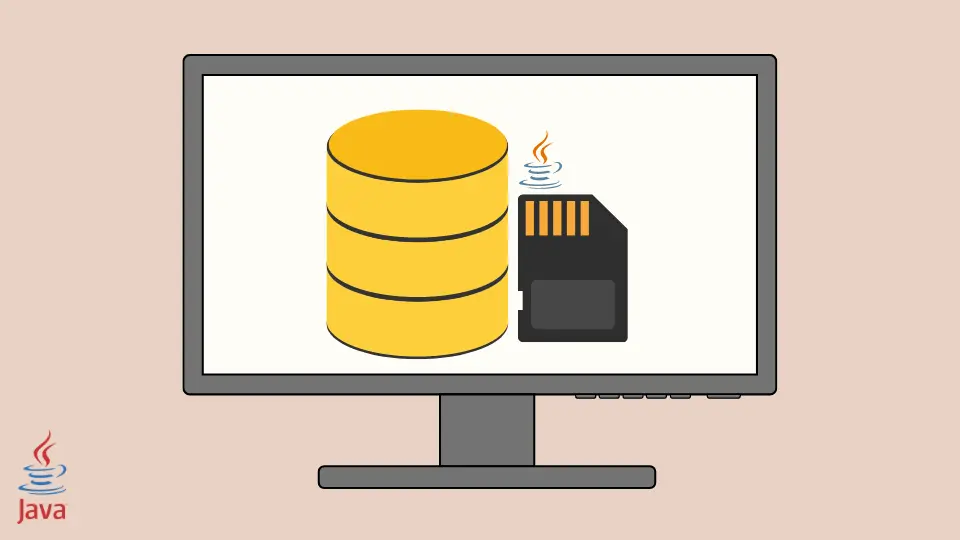Java 中的記憶體快取

本教程將討論我們可以在 Java 中用於記憶體快取的兩個庫。
在 Java 中使用 Guava 庫進行記憶體快取
從 API 或資料庫中獲取資料時,如果我們希望頻繁訪問它,那麼在需要時獲取相同的資料可能會很昂貴。快取變得很有用,因為它可以儲存經常需要的資料,以便以後輕鬆訪問。
為了在我們的專案中包含 Guava 庫,我們使用以下 Maven 依賴項。
<dependency>
<groupId>com.google.guava</groupId>
<artifactId>guava</artifactId>
<version>31.0.1-jre</version>
</dependency>
例子:
import com.google.common.cache.CacheBuilder;
import com.google.common.cache.CacheLoader;
import com.google.common.cache.LoadingCache;
import java.util.concurrent.ExecutionException;
import java.util.concurrent.TimeUnit;
public class ExampleClass1 {
private final LoadingCache<String, String> loadingCache;
public ExampleClass1() {
final CacheLoader<String, String> loader = new CacheLoader<>() {
@Override
public String load(String key) {
return key.toUpperCase();
}
};
loadingCache = CacheBuilder.newBuilder()
.maximumSize(1500)
.expireAfterAccess(15, TimeUnit.MINUTES)
.build(loader);
}
public static void main(String[] args) throws ExecutionException {
ExampleClass1 cacheExample = new ExampleClass1();
cacheExample.loadingCache.put("key1", "value1");
cacheExample.loadingCache.put("key2", "value2");
System.out.println("Whole cache as map: " + cacheExample.loadingCache.asMap());
System.out.println("Get a single value using a key: " + cacheExample.loadingCache.get("key1"));
}
}
輸出:
Whole cache as map: {key1=value1, key2=value2}
Get a single value using key: value1
我們使用上面程式碼中鍵和值的型別引數建立了一個 LoadingCache 例項。在建構函式中,我們重寫了計算和檢索值的 CacheLoader 類的 load() 函式。
我們稱 CacheBuilder 為 LoadingCache 的構建器。我們也呼叫 newBuilder() 方法。將快取可以包含的最大值數和快取的過期時間設定為訪問後的 15 分鐘。
然後我們用 loader 例項呼叫 build() 方法。為了從快取中插入和獲取資料,我們在 main() 方法中建立 ExampleClass1 的物件,並呼叫 put() 方法以鍵值對格式插入值。
我們可以使用 asMap() 方法將整個快取作為地圖獲取,並且要從其鍵中獲取單個值,我們使用 get() 函式並將鍵作為其引數。
在 Java 中使用 EhCache 庫進行記憶體快取
對於此示例,我們使用另一個名為 EhCache 的快取庫,我們可以使用以下 Maven 依賴項將其包含在專案中。
<dependency>
<groupId>org.ehcache</groupId>
<artifactId>ehcache</artifactId>
<version>3.9.6</version>
</dependency>
例子:
import org.ehcache.Cache;
import org.ehcache.CacheManager;
import org.ehcache.config.builders.CacheConfigurationBuilder;
import org.ehcache.config.builders.CacheManagerBuilder;
import org.ehcache.config.builders.ResourcePoolsBuilder;
public class ExampleClass1 {
public static void main(String[] args) {
CacheManager cacheManager = CacheManagerBuilder.newCacheManagerBuilder()
.withCache("exampleCache",
CacheConfigurationBuilder
.newCacheConfigurationBuilder(String.class,
String.class, ResourcePoolsBuilder.heap(50))
.build())
.build(true);
Cache<String, String> cache = cacheManager.getCache("exampleCache", String.class, String.class);
cache.put("First Name", "Sam");
cache.put("Last Name", "Maxwell");
String getFirstNameFromCache = cache.get("First Name");
String getLastNameFromCache = cache.get("Last Name");
System.out.println("First Name: " + getFirstNameFromCache);
System.out.println("Last Name: " + getLastNameFromCache);
cacheManager.close();
}
}
輸出:
[main] INFO org.ehcache.core.EhcacheManager - Cache 'exampleCache' created in EhcacheManager.
First Name: Sam
Last Name: Maxwell
[main] INFO org.ehcache.core.EhcacheManager - Cache 'exampleCache' removed from EhcacheManager.
正如我們所見,我們呼叫了 CacheManagerBuilder 類的 newCacheManagerBuilder() 方法。然後我們呼叫 withCache() 方法引數;第一個引數是快取的別名,第二個引數是 CacheConfiguration 型別的快取的配置。
我們使用 CacheConfigurationBuilder.newCacheConfigurationBuilder() 方法配置快取,在該方法中我們傳遞鍵和值的型別。然後我們通過呼叫它的 build() 方法的堆大小。
最後,我們呼叫 CacheManagerBuilder 類的 build() 方法並傳遞 true,因為它的引數返回 CacheManager 的例項。
一旦設定了管理器,我們呼叫 getCache() 方法並傳入別名和鍵值型別以獲取返回 Cache 的快取並帶有型別引數。我們呼叫 put() 方法使用快取物件以鍵值對的形式將值插入快取。
我們使用 get() 方法從快取中獲取值。最後,我們關閉 cacheManager 以完成流。
Rupam Saini is an android developer, who also works sometimes as a web developer., He likes to read books and write about various things.
LinkedIn